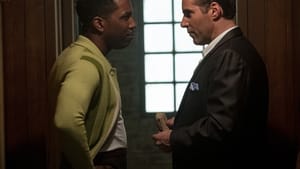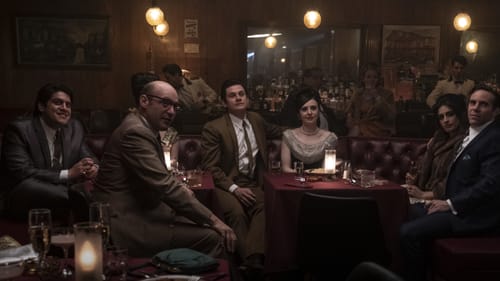Stay in the Loop
BSR publishes on a weekly schedule, with an email newsletter every Wednesday and Thursday morning. There’s no paywall, and subscribing is always free.
The Sopranos, before and after
HBO presents The Many Saints of Newark

The Sopranos, when it ran on HBO from 1999 until 2007, was one of the most acclaimed and influential television series in history. It ushered in a new era of television, one of antiheroes and “peak TV,” helmed by larger-than-life showrunners. It also found a new way to tell stories about the Mafia, tied up in a story about America in the Bush era.
Now, after numerous fans old and new spent their quarantine binge-watching The Sopranos, we have the first-ever Sopranos movie. The Many Saints of Newark, set in the late 1960s and early 1970s, is a prequel to the events of the series. Written by series creator David Chase and directed by one of its signature directors, Alan Taylor, The Many Saints of Newark tells the story of the early years of Tony Soprano. Tony is played in the 70s scenes by Michael Gandolfini, the son of the late original Tony, James Gandolfini.
The right look and style
Much of the plot follows young Tony feeling torn among several potential father figures: his own, frequently imprisoned gangster dad (Jon Bernthal), his Uncle Junior (now played by Corey Stoll), and Dickie Moltisanti (Alessandro Nivola), the father of Sopranos character Christopher. We also get a younger version of Tony's toxic mother Livia (Vera Farmiga, stepping in for the late Nancy Marchand). There is even one moment that reshuffles something we thought we knew about The Sopranos.
The film feels like The Sopranos. The style and look are right, and while the writing isn't quite as sharp as on the show, it creates compelling characters, and the story arcs are true to the series, even echoing it at various points. While the primary gangster war sort of peters out without a satisfying conclusion, that's also what happened to just about every similar plot across the run of the series.
The performances are very strong, especially the young Gandolfini, finding a soulful way to play his father's most famous character. Ray Liotta, meanwhile, plays a fascinating dual role. And the film offers more fan service than you’d think, from a creator who ended the original series in the most un-fan-service way imaginable.
Racism on The Sopranos
There is one aspect of the film, though, that stands out in particular in contrast to the original series: its treatment of race.
The film has a sequence set against the backdrop of the real-life Newark riots in 1967, which began after two white police officers beat up a Black taxi driver. Once the film’s action skips a couple of years to the early 70s, the characters have moved to the suburban New Jersey milieu of the series, as part of the "white flight" of the time.
The Many Saints of Newark also introduces a new character named Harold McBrayer (played by Philadelphia native and Hamilton co-star Leslie Odom Jr.), a Black man first allied with the Soprano crew and later at odds with them. And it shows the mobster characters being much more overtly racist than they typically were on the show, including Tony's father having a meltdown about a Black family’s move to the neighborhood.
This isn't to say that The Sopranos never dealt with racism in its original run. The show made clear repeatedly that members of the Mafia aren't exactly the most racially enlightened bunch. We saw numerous characters use ugly racist slurs and Tony reject a Black boyfriend of his daughter. One entire episode, season five's "Unidentified Black Males," included four different examples of the characters falsely blaming nonexistent Black assailants for bad things that had happened to them.
However, the series almost never gave Black characters as much depth as the movie gives Harold McBrayer, nor did it tend to allow them romantic affairs. And in fact, the series mostly treated Newark as either a crime-ridden drug haven, or as a place for the mob to embezzle from massive construction projects.
Racism on screen, racism in life
The Many Saints of Newark was filmed before the pandemic, and therefore prior to George Floyd’s murder and the subsequent uprising. But related themes were clearly on the minds of the actors, including two who visited Philadelphia for a press roundtable last month.

"I think David [Chase]’s feeling in general is that nothing ever changes," Nivola said, after I asked him about the film seeming to anticipate the Floyd moment. "So I think it probably came as no surprise to him that news was, a year later, reflecting the riots that we shot in the film the year before. I think we all had that feeling that it's just horrible and upsetting to see something on television in the modern age look so much like something we're so ashamed of back in the late 60s."
Nivola added that "I think we were all really kind of curious as to how that was going to affect how those scenes were perceived in the movie by audiences, and how those themes in the movie were going to kind of rise in relevance” with the happenings of spring and summer 2020.
"I think that there is sort of a cynicism of, 'what are we gonna do?' We can tell a million stories like this, kind of showing that racism is still in America, but is it ever gonna change?" Gandolfini said in the same roundtable. "I was excited to see what Leslie did, and sort of have this experience of what Leslie was going to teach me and bring to this.”
“[David Chase] was determined not to sugarcoat the racism of the Italians in the movie, and was determined that that be as ugly as it was in real life," Nivola said. "On the other hand, to give Harold's character a real three-dimensionality to it, and a weight that would be the kind of counter to Dickie's story."
Ahead of its time
There is one particular thing missing from The Many Saints of Newark: the TV series’s sense of commentary about its own time. In story lines that went way beyond the mob plots, the original series had specific things to say about masculinity, parenting, Italian American culture, and much more—and in many ways was ahead of its time. Which is why the series has become close to universally beloved of late in a way that it never did while it was on the air.
The period movie can’t quite pull that key part off, but it’s still a worthy continuation of the Sopranos mythology.
What, When, Where
The Many Saints of Newark is now playing in theaters and streaming on HBO Max.
Sign up for our newsletter
All of the week's new articles, all in one place. Sign up for the free weekly BSR newsletters, and don't miss a conversation.
 Stephen Silver
Stephen Silver